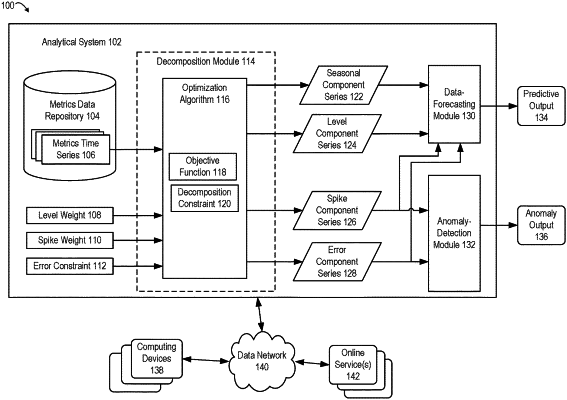| CPC G06F 16/2474 (2019.01) [G06F 16/248 (2019.01); H04L 63/1425 (2013.01)] | 20 Claims |

|
1. A method, comprising:
accessing, by a processing device, a time series having metrics data describing interactions with an online service over a time period;
decomposing, by the processing device, the time series into latent components comprising a seasonal component series, a level component series, a spike component series, and an error component series, wherein decomposing the time series comprises:
configuring an optimization algorithm with a constraint indicating that the time series is a sum of the seasonal component series, the level component series, the spike component series, and the error component series,
executing the optimization algorithm to minimize an objective function subject to the constraint, and
identifying, from the executed optimization algorithm, the seasonal component series, the level component series, the spike component series, and the error component series that minimize the objective function; and
performing, by the processing device, an anomaly-detection operation using at least two of the latent components to generate an anomaly output, wherein the anomaly-detection operation includes using a first component of the at least two of the latent components to analyze a second component of the at least two of the latent components; and
causing, by the processing device, a display device to render a graphical user interface that includes the anomaly output.
|